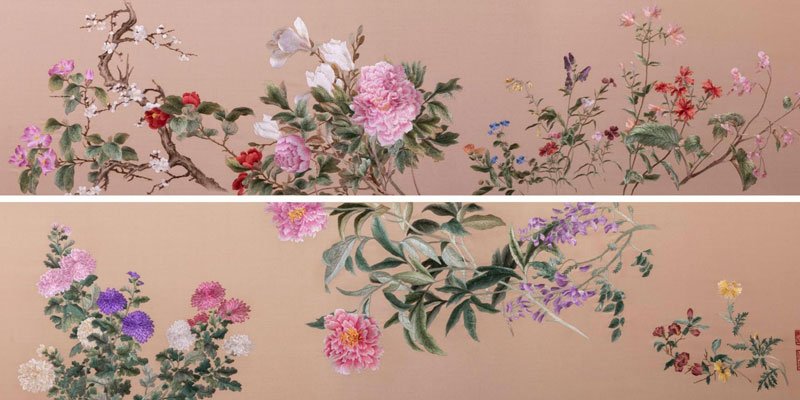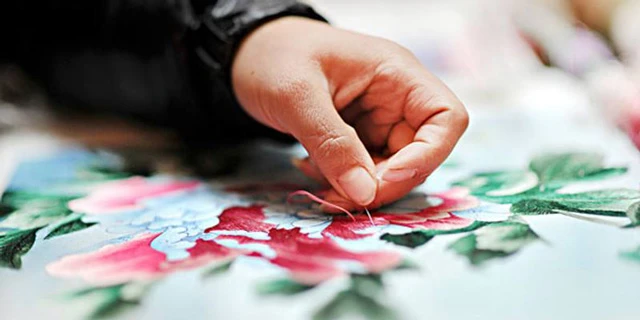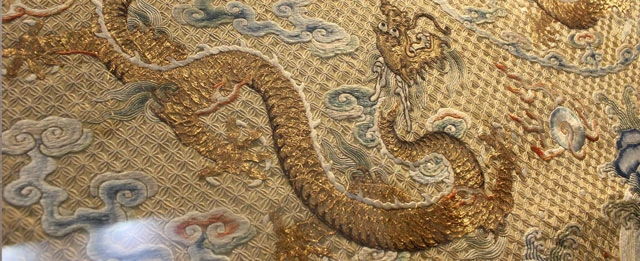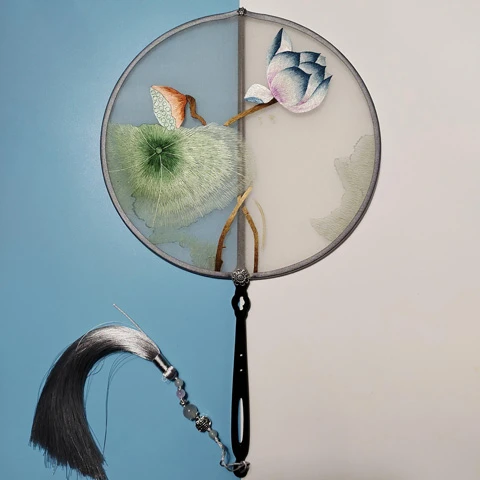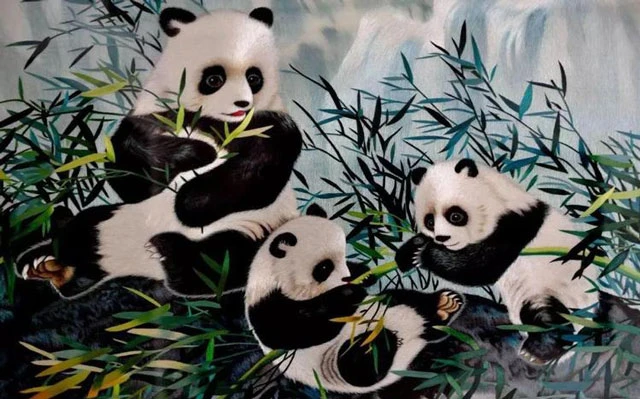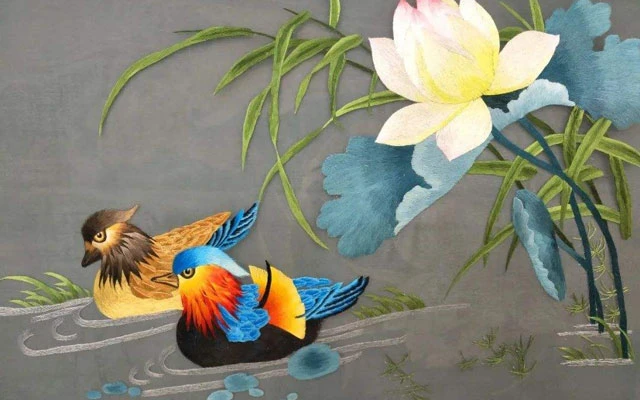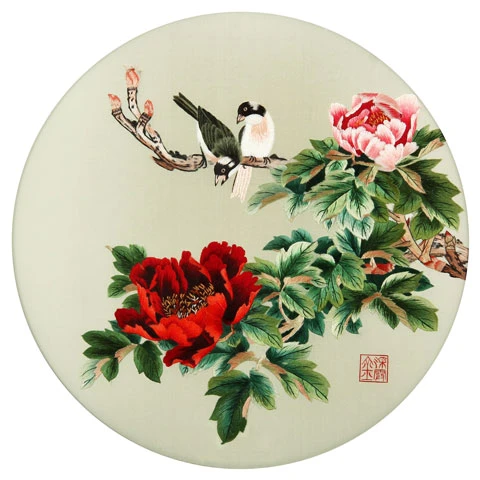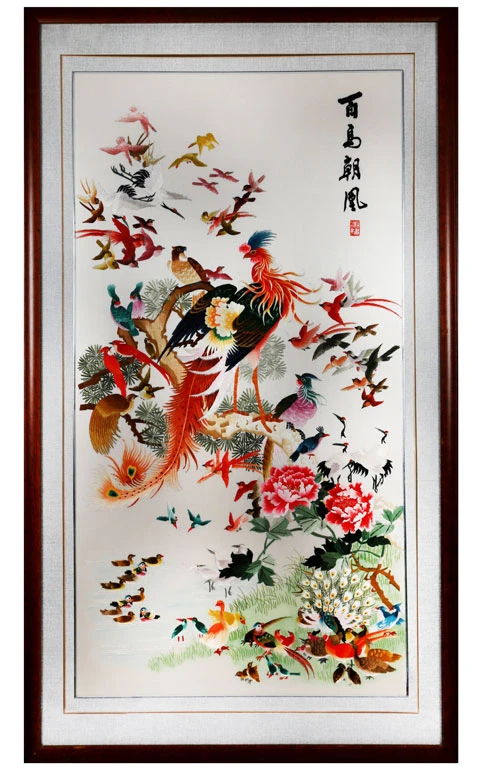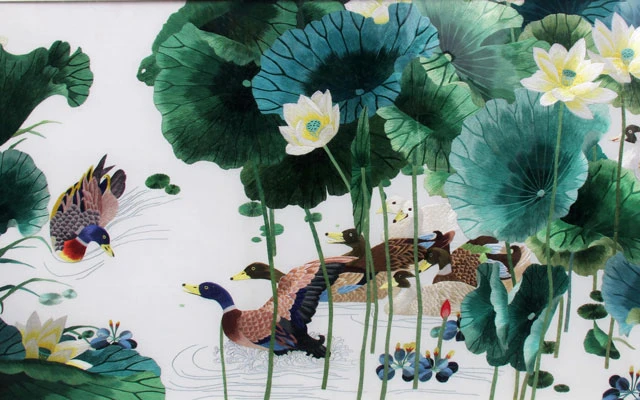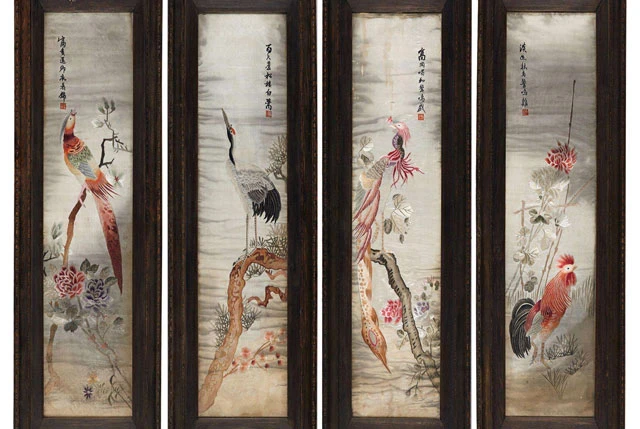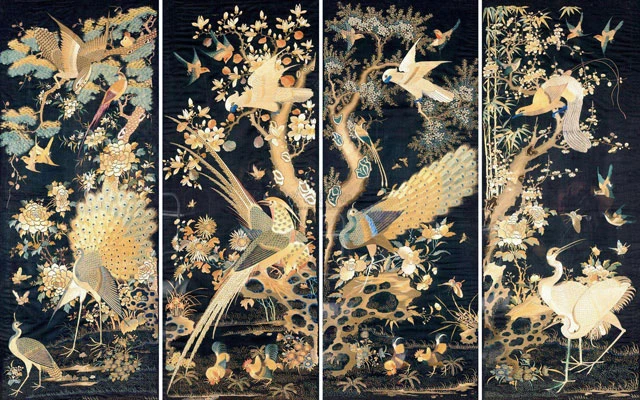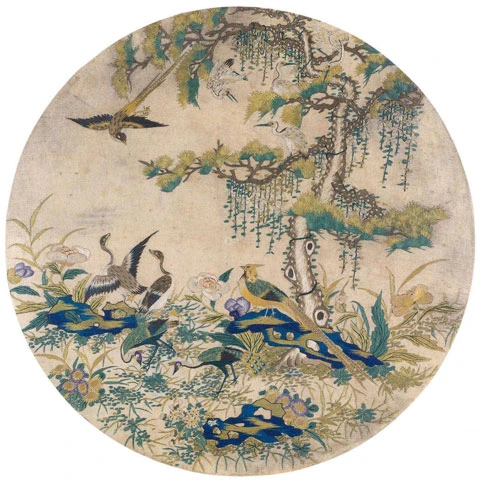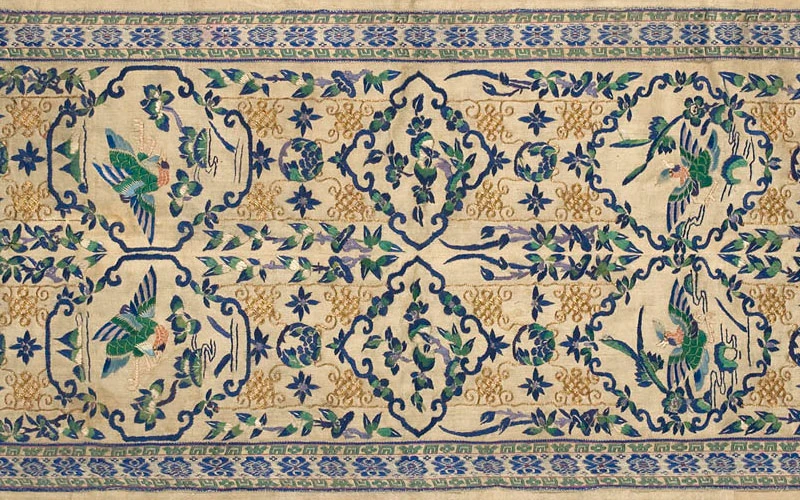The oldest Chinese embroideries found date back to the Zhou dynasty (1027-221 B.C.) and may well be the earliest that ever existed.
However, very early embroideries have also been found in Egypt and Northern Europe, so it is not clear in which part of the world the art of embroidery actually originated - it may also have appeared in several parts of the world at about the same time.
It is, however, accepted that the Chinese invented sericulture and mastered the art of reeling the cocoons of the bombyx and spinning the silk from very early times.
It is therefore not surprising that the ancient Chinese embroideries were made of silk. Strangely enough, embroidery in China was at first reserved for men, before they entrusted this task to the more delicate fingers of their women.
The earliest surviving example of Chinese silk embroidery is a ritual garment found in a tomb in Mashan, now Hubei Province, in the fourth century BC, during the early Taoism period (before the appearance of Buddhism in China).
However, if we are to believe the patterns drawn on this garment, it could just as well have been used to perform the rituals of a religion that predates Taoism.
This current, resulting from a mixture of religious and magical practices dating back to pre-imperial China (where the notions of Yin and Yang have their roots), having spread quite slowly across China.
The art of embroidery spread in China during the Han Dynasty (206-220). Four distinct styles or schools of embroidery developed at this time, but each did not reach its peak until much later.
Especially after trade along the Silk Road intensified. India, the Middle East, and Europe formed a new market for Chinese embroidery, and Middle Kingdom craftsmen set about meeting the demand for ever more refined and complex designs.
The four schools of Chinese embroidery have all been designated "Intangible Heritage of China".
They are :
- Shu embroidery (named after the kingdom of Shu (221-263), one of the three kingdoms of the same name (220-280), whose territory overlapped with the present-day Sichuan province);
- Xiang embroidery (developed by the silk craftsmen of a territory corresponding to the current Hunan province);
- Su embroidery (the traditional art of the current Jiangsu province);
- Yue embroidery (the traditional art of the current Guangdong province). Below is a brief description of these four schools of Chinese embroidery.
The art of Shu embroidery
Shu embroidery developed in and around Chengdu, in the present-day Sichuan province, which is why it is also called Chuan embroidery (note that the "chu" in "Sichuan" is pronounced the same as "Shu", which means that "si-chuan" and "si-shuan" are pronounced the same).
The most remarkable characteristics of Shu embroidery are as follows:
- They are made with brightly colored threads.
- They are distinguished by their very tight stitch, a technique necessary for the realization of complex patterns (one could compare this to a high resolution quality, as opposed to a low resolution, for a digital image).
- The different colored threads that compose them are gradually intertwined so that the color changes are particularly soft and nuanced.
- Their motifs are mainly inspired by nature: plants and flowers, fish, birds and other animals, landscapes.
- One of the most common motifs is the panda.
The art of Shu embroidery follows strict principles: according to the tradition of this school, there are 12 different ways of embroidery, which can be subdivided into 122 categories. Shu embroideries are usually made from soft satin pieces, which are still made in Sichuan today.
Comforter covers, pillowcases, tablecloths, chair cushions, scarves, and handkerchiefs are some of the most commonly embroidered items in the Shu style.
The art of Xiang embroidery
Xiang embroidery was born and developed in Hunan province.
This style of embroidery takes its name from the river that runs through the province (the term "Hunan" means "south of the lake": this province, as well as the style of embroidery associated with it, both have names inspired by water, a sign of the importance that rivers and lakes had in China in the past).
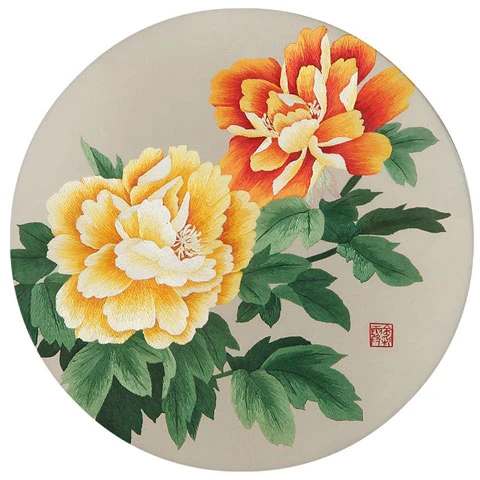
The most remarkable characteristics of Xiang's embroideries are the following:
- They are deliberately inspired by other art forms, such as painting, engraving or calligraphy (which has also become a form of painting).
- They are "reversible": their two sides are decorated with distinct patterns.
- They are distinguished by their satin appearance: the motifs represented are very soft, very smooth, which is both due to the choice of the material worked, the fineness of the colors and the choice of the motifs.
- Their motifs generally represent landscapes, people, birds and other animals, notably lions and, especially, tigers.
Xiang's embroideries are unmistakably beautiful. More than the variety of colors, they emphasize the liveliness of the tones, which leads their detractors to criticize them for being garish.
This style of embroidery prefers the delicacy of suggestion and complicated intertwined patterns to simple, brightly colored representations that emanate a mellow luxury.
Xiang's embroidery was very popular in China, especially in the late Qing Dynasty. They have also won numerous awards at international exhibitions, including Japan, the United States and, more unexpectedly, Panama.
The art of Su embroidery
Su embroidery takes its name from the city of Suzhou in Jiangsu province.
Unlike the other three schools of Chinese embroidery, this style of embroidery has two distinct periods: before and after the Ming dynasty. Very little is known about the art of Su embroidery before the Ming Dynasty, but it is believed that it was quite similar to that of other embroidery schools.
Towards the end of the Ming Dynasty, Su embroidery was influenced by both Japanese and Western art, which radically transformed it (the Japanese influence is not surprising, as Jiangsu is not far from the Japanese coast, while the Western influence probably came about as a result of the increased trade between China and the rest of the world).
The most remarkable characteristics of Su's embroideries are the following:
- They are known for their refinement, with well-marked but still delicate lines and elegant and tasteful compositions.
- Their tight stitch is reminiscent of Shu's embroidery. The patterns are meticulously made with a fine needle.
- Their colors are the result of the combination of different colored threads, allowing to obtain the desired shade, in the same way that a painter mixes different colors to obtain the one he is looking for.
- Since the middle of the Qing dynasty, they have been "reversible", like the Xiang embroideries. The greatest masters of Su embroidery produce double-sided pieces, whose reverse side is a mirror image of the front side, a technique requiring great skill.
Su embroidery became so famous throughout China in the late Qing Dynasty that Suzhou was given the title of "embroidery city". They became the favorite embroidery of the Qing court, both for official costumes and for wall ornaments, such as tapestries.
The Suzhou craftsmen were also the first to use gold and silver threads, which allowed them to create bright embroidery designs that were very popular, especially at court.
Su's embroideries are still very popular. Today, they are used not only on clothes and tapestries, but also on many other items, such as handbags. Their quality has been recognized many times at international exhibitions.
The art of Yue embroidery
Yue embroidery, sometimes called Cantonese embroidery, is a traditional art of Guangdong, the southernmost coastal province of China (Canton area, which was an important part of China in the colonial period).
Some believe that Yue embroidery is the oldest school of embroidery in China, but there is no solid evidence to support this assumption.
Historical documents tell us that the earliest Yue embroidery was made with peacock feathers twisted into a thick, cord-like thread and with horsehair, which was used to mark the spaces for the different colors, thus making the designs more distinct.
These two materials are still used today, but more to produce an ornamental effect, occasionally, than in a systematic way.
Yue embroidery does not really have any specific characteristics. It is considered the most eclectic of the four schools of Chinese embroidery, and combines various elements from the styles of the other three schools.
Nevertheless, it can be associated with the following characteristics:
- As a rule, the motifs represented by Yue embroideries do not try to create the illusion of depth, of a third dimension - but this is not always the case...
- The most common motifs represented by Yue embroideries are mythical creatures, such as sun birds, dragons, and phoenixes, as well as flowers. Sometimes they are made not on silk but on cotton.
Yue embroideries are as richly colored as those of other Chinese embroidery schools. They are particularly appreciated by Chinese expatriate communities around the world, including those closest to them geographically, such as those in Hong Kong and Macao.
Yue's embroideries have won numerous awards, including at international exhibitions. And when some of the oldest models of these embroideries are presented at international auctions, such as those organized by Christie's or Sotheby's, they are bought at exorbitant prices.
More about Chinese embroidery:
